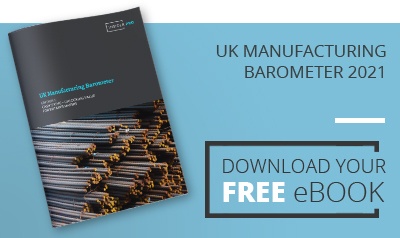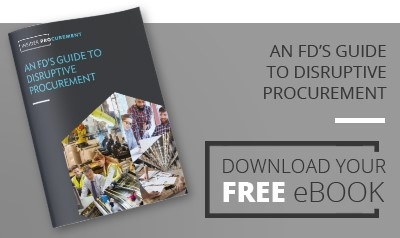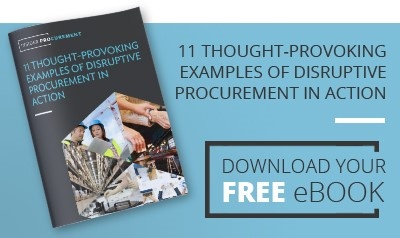
There are two routes to growing the value of your business. You can use brute force – just keep cranking up production, run your sales force hot and hope the rest follows, or you can take steps to increase the multiple of profits the business will attract when you come to sell. It’s pretty hard to rely on growth alone. Insider Pro’s Manufacturing Barometer shows that UK manufacturers managed to increase sales by a fifth between 2015 and 2020 before the pandemic – that’s great. But unfortunately, profits haven’t budged. An extra £38bn on the top line hasn’t delivered any additional operating profit. Companies, especially smaller manufacturers, endured a steady margin squeeze that left them less resilient when Covid-19 struck. Higher revenues alone are not enough to build enterprise value.

Of course, the last twelve months have caused a painful hit to industry. Manufacturing has certainly fared better than some parts of the economy like high street retail and hospitality, but even so sales are down around 10% across a broad spread of manufacturing sectors, while profits have approximately halved. Manufacturers are also having to face the messy complications caused by Brexit.
Huge upheaval like this feels awful but it also provides a golden opportunity for a rethink. If you can work both routes at the same time – growing the business and expanding the multiple – then you can really transform the value of your company. There are lots of dials on your metaphorical dashboard that can help you drive higher sales and do so profitably by controlling your costs. If you can grow your profitability 10% but you don’t increase your multiple, then your business is worth 10% more. Not bad. But if you can also get the multiple of profits a buyer would be prepared to pay from 5x EBITDA (operating profit with depreciation added back) to 6x, you’ve just added another 20% right there. Suddenly your business is worth a third more!
Getting your supply chain right goes to the very heart of the issue. These months of crisis have exposed some structural weaknesses in how manufacturers manage their supply chains. A moment of such dislocation makes it easier to reform long-established practices that no longer serve the business well. In any recovery, manufacturers all need to start thinking like growth companies as they come off the back off a ‘low volumes’ year. Scaling up always means stress-testing your supply chain, rather than simply expecting it to grow with you. If your suppliers don’t have capacity, don’t blame them if they can’t keep up, so keep them close and keep an eye on them. Minor problems can quickly balloon as you get bigger.
For example, through the pandemic we have seen how shipping costs can spiral unexpectedly and the availability of product can disappear altogether – supply chains can simply break. Accidents happen too. Indeed, the hullabaloo in the Suez Canal completely severed Asian supply routes in March this year creating all sorts of ripples that took weeks to smooth out. Put simply, a cheap listing price for a component or raw material is irrelevant if getting it to your factory gets pricier, or if you simply can’t get it there at all.
Cash is one of the biggest obstacles for growth, so companies must prioritise cash generation over profit. At Insider Pro we help businesses embed a cash-first culture from boardroom to shop floor. Just adding cash monitoring to weekly reporting can make a surprising difference. Don’t just buffer your business with loads of inventory if you are anxious about disruption to supplies or fulfilment, or because you lack visibility about demand for your products. That’s a cash black hole, right there.
Better forecasting certainly helps, but crucially sourcing supplies closer to home makes a huge difference. For example, China’s low prices are tempting but if you are growing your sales rapidly, such a long supply chain makes the business less resilient and will tie up mountains of working capital. So rather than only aiming for the lowest unit price for a component, the real win may come from sourcing products closer to home and the payoff is more rapid sales growth with less environmental impact and a lower cash-funding requirement.
It might cost a little bit more, but a simpler, shorter supply chain will help you maximise product availability and that means you can take market share from less agile competitors. Show the value of being close to your customer if your competitors are on the other side of the world. That’s a valuable barrier to entry against newcomers.
Similarly, when you innovate you are thinking about adding to the growth side of the enterprise value equation. That’s great. But make sure your engineers have thought about where they will source components. If there is only one supplier and that supplier is far away, you’ve just introduced a major vulnerability into your business and that knocks a chunk off the multiple side of the equation.
Supply chains have consistently dominated the headlines during the last few months. Post-Brexit food shortages in Northern Ireland, pandemic panic-buying, vaccine programmes, disruption of global shipping – the list goes on. Weak supply chains mean risk.
Potential investors pay less for vulnerable businesses. They pay more for those that can execute consistently, are more resilient than their competitors and generate lots of cash in the process. In our experience finance directors underestimate by half the efficiencies they can extract. That’s a big lever to pull in terms of increasing your enterprise value and is especially important in limiting the amount of cash burnt each month.
Over the next couple of years, we are going to see a dramatic rebound in manufacturing that will push sales and profits higher. If companies reengineer their supply chains and source closer to home as part of the recovery then positive multiplier effects can reverberate around the British economy too. Growing sales, expanding margins, building resilience, and doing all this with the most efficient use of scarce capital possible, are the perennial objectives of businesses everywhere that wish to grow their enterprise value. You don’t have to choose route A or route B. You can travel both roads to a higher valuation for your business.
Download the UK Manufacturing Barometer for more insight, using the link below.



